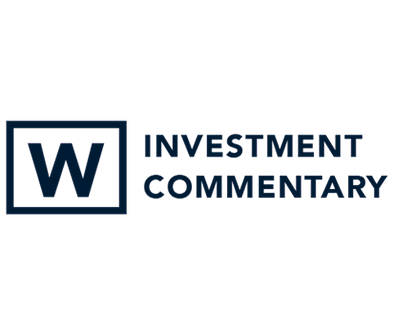While writing our quarterly review this time last year, the stock market was beginning a recovery following a ferocious decline from the month before. Going back and reading our April 2020 letter, there are two things that particularly stand out. Number 1 – The pandemic turned out to be much worse than expected with more infections and deaths than anyone projected. Number 2 – The stock market performance and corporate results were much better than expected and 2020 turned out to be a decent year for stock returns. You may have thought the financial markets would have performed worse due to the severity of the pandemic, but this was not the case. Which bring us to Number 3 – We could not accurately foretell how the pandemic or economy would play out because that is unknowable, but we did know the pandemic would eventually end and we knew our counsel and perspectives at the time were right. We were not right because we predicted the future; we were right because we adhered to our principles, faith, and discipline of acting on our plan and not reacting to markets. When the next unprecedented crisis occurs, you will be grateful you have a plan in place.
The stock market has been on a tear since election day on November 3rd. The economy is picking up speed and business expansion is shifting into high gear. March’s addition of 916,000 new jobs and the highest level of U.S. manufacturing activity in 37 years bodes well for the economy in 2021. The quick progress, however, is coming with a cost, namely product shortages and inflation. You have likely experienced this yourself when attempting to purchase certain products. It is reasonable to believe that these are short–term issues triggered by the pandemic and the timing of the economy reopening. The good news is that these issues are fixable, and investments will ultimately be made to create the necessary inventory and supply to satisfy demand. The bad news is that it could take time, with inconveniences and frustrations along the way. In fact, if prices for labor and materials get too high, it can have a slowing effect on the economy. This is not the likely scenario because strong stock prices and low interest rates are giving businesses the green light to increase capacity and production to satisfy current and future demand, which should help reduce the short–term inflationary pressures the economy is experiencing.
While the prospects for the economy look good, we are beginning to see pockets of speculation and potential froth in certain segments of the stock market. We are not concerned about the overall stock market but are concerned that some investors are chasing rising prices and overpriced assets. We have gone through these periods before and know short–term speculators will likely be disappointed and achieve poor investment results. We may occasionally own a speculative investment or two, but it will always remain a small allocation within the context of a portfolio. Currently, we are shying away from these exciting areas as we do not find the risk-reward profiles attractive. However, if prices were to decline, we welcome the opportunity to own some of these companies in exciting growth areas. If a company is going to be a great investment over the next decade, it does not have to be owned during the first year or two as a public company. Quite often waiting for the company to season a little will help avoid making hasty investment mistakes.
Stocks have been exhibiting strength across the board. The rotation into cyclical-value stocks continued and helped push the S&P 500 Index to new highs despite consolidation in many mega cap stocks. U.S. small caps led the way rising 12.7% during the first quarter. Large cap stocks followed with a +6.2% return and then international stocks at +3.6%. The MSCI All World index was +4.7% for the first quarter.
The bond market experienced one of its worst quarterly performances on record. As interest rates rise the price of a bond will decline. The reason this occurs is because a bond has a fixed interest rate and when market rates rise, the price must decline to stay equal to the market rate. Interest rates rose across the board with the 5-year Treasury yield going from 0.45% to 0.89% and the 10–year Treasury yield increasing almost a full percent to 1.73%. While the rate change may not seem large in absolute terms it is large in relative performance terms. The overall U.S. bond market declined 3.4% in the 1st quarter led by a decline of 4.5% and 4.6% in corporate and Treasury bonds. Interestingly, municipal bond yields held steady, and prices only declined slightly. We believe muni prices were supported by the prospects of higher taxes. Because our bond portfolios were more defensive than the overall bond market, client fixed income portfolios held up significantly better than the averages.
The growth in our wealth management business in recent years has been humbling. With growth comes the need for additional team members and office space. Luckily, the office next to us became available and we are currently in the process of expanding into it. We are not moving locations, but we will have a new entrance with additional meeting space. We welcome everybody to stop by for a visit after its completion this summer. We think you will love the comfort of our new meeting areas.
We want to conclude with announcing our newest team member, Taylor Herzog. Taylor has been entrenched in the wealth management industry for the last 14 years. Spearheading our newly formed position of Director of Portfolio Management, Taylor is responsible for trading, monitoring and rebalancing investment portfolios. Taylor will also apply his knowledge and expertise to integrating software solutions for portfolio reporting and operations. Additionally, as a Chartered Financial Analyst (CFA) and a Chartered Alternative Investment Analyst (CAIA) we welcome him as a contributing member of our Investment Policy Team.


